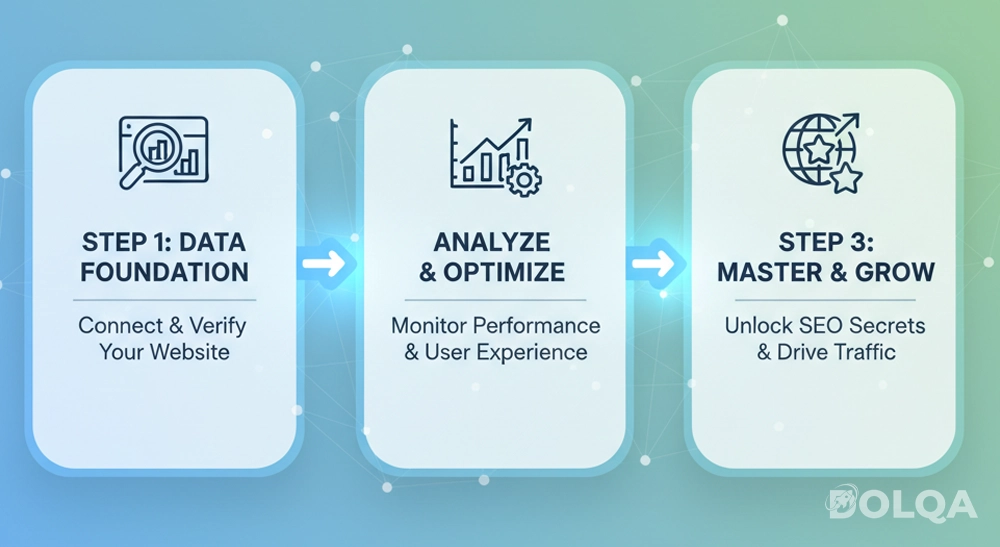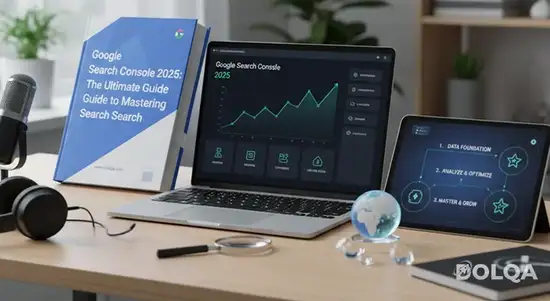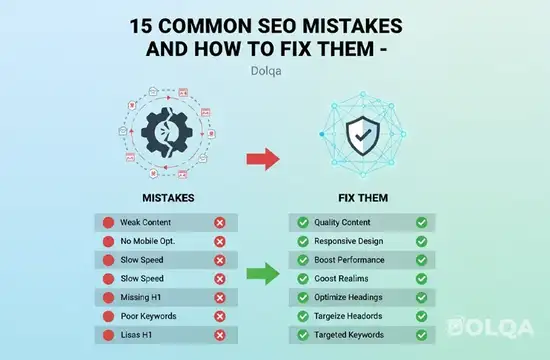Introduction: Your Window into Google's Perspective
Google Search Console isn't just another analytics dashboard—it's your direct line to understanding how the world's most powerful search engine perceives your website. In 2025, mastering this indispensable SEO tool has become non-negotiable for anyone serious about their digital presence. Whether you're troubleshooting indexing issues, analyzing search results performance, or optimizing for better Google ranking, Search Console provides the foundational intelligence you need.
Let me walk you through everything that matters, stripping away the complexity to reveal what truly drives website performance in today's search landscape.

What Makes Google Search Console Essential
Google Search Console serves as the bridge between your website and Google's search ecosystem. Unlike third-party SEO tools that estimate data, Search Console delivers actual performance metrics straight from Google's infrastructure. You'll discover precisely which queries bring visitors to your site, how your pages appear in search results, and—crucially—what technical barriers might be preventing your content from reaching its audience.
The 2025 iteration has refined its interface significantly, making data interpretation more intuitive while adding sophisticated features for understanding user behavior patterns. This isn't about vanity metrics; it's about actionable intelligence that directly impacts your visibility.
Setting Up Your Foundation
Verification Methods That Work
Before accessing your data, you'll need to verify ownership of your website. Google offers several verification paths, each suited to different technical comfort levels:
HTML File Upload: Download a verification file and upload it to your site's root directory—straightforward for those with direct server access.
HTML Tag Method: Add a meta tag to your homepage's head section. This approach works beautifully for beginners using content management systems.
Google Analytics Connection: If you're already using Analytics with administrative access, verification becomes instantaneous.
Domain Property Setup: The most comprehensive option, requiring DNS record modification but providing complete coverage across all subdomains and protocols.
Choose the method that aligns with your technical capabilities, knowing that verification is a one-time investment that unlocks continuous insights.
Decoding Website Performance Metrics
The Performance Report: Your Search Visibility Dashboard
This is where Google Search Console reveals its true power. The Performance report displays four critical metrics that illuminate your search presence:
Total Clicks: The number of times users clicked through to your site from search results. This represents actual traffic, not just visibility.
Total Impressions: How many times your pages appeared in search results, regardless of whether users clicked. High impressions with low clicks suggest opportunities for improving your titles and descriptions.
Average Click-Through Rate (CTR): The percentage of impressions that converted to clicks. Industry standards hover around 3-5%, but top-performing content regularly exceeds 10%.
Average Position: Where your pages typically appear in search results. Position tracking helps you monitor ranking fluctuations and identify trending content.
Consider a common scenario: a page generating 10,000 impressions but only 100 clicks—a 1% CTR. Refining the meta description to better align with search intent could triple that traffic without improving the ranking itself.
Understanding Search Results Analysis
Query Analysis: The Language of Your Audience
The queries report reveals the exact phrases people use to find your content. This goldmine of information shows not just what you rank for, but what your audience actually seeks. In 2025, with AI-powered search evolving rapidly, understanding query intent has become more nuanced.
Filter your queries by:
- Search type (web, image, video, news)
- Date ranges to spot seasonal patterns
- Country and device for geographic and technical insights
Compare different periods to identify rising queries that deserve content expansion or declining terms that need refreshing.
Pages Performance: Your Content Report Card
This analysis shows which pages earn the most visibility and engagement. You'll often discover surprising results—pages you considered secondary might actually drive significant traffic, while carefully crafted cornerstone content might underperform.
Use this intelligence to:
- Identify high-impression, low-click pages needing optimization
- Discover successful content patterns worth replicating
- Spot pages losing rankings that require immediate attention
- Find opportunities to strengthen internal linking structures
Technical Health Monitoring
Index Coverage: Ensuring Google Sees Your Content
The Coverage report functions as your website's health monitor, revealing which pages Google has successfully indexed and which face barriers. Valid pages indicate successful indexing, while errors, warnings, and exclusions require investigation.
Common indexing issues in 2025 include:
- Crawl budget limitations on large sites
- JavaScript rendering challenges with complex frameworks
- Mobile-first indexing discrepancies between desktop and mobile versions
- Core Web Vitals failures preventing page indexing
Address errors systematically, starting with those affecting your most valuable content. Google provides detailed explanations for each issue, making troubleshooting more accessible than ever.
Mobile Usability and Page Experience
With mobile searches dominating in 2025, Google Search Console's mobile usability report has become critical for website performance. The tool identifies elements that create friction on mobile devices—clickable elements too close together, text too small to read, content wider than screens.
The Page Experience report synthesizes Core Web Vitals data, HTTPS security, mobile-friendliness, and intrusive interstitial issues into a comprehensive view of user experience quality. These factors directly influence Google ranking, making them non-negotiable priorities.
Advanced Features for Strategic Growth
Sitemaps and URL Inspection
Submitting XML sitemaps helps Google discover and prioritize your content efficiently. The URL Inspection tool lets you check any URL's status, request indexing for new content, and view exactly how Googlebot renders your pages.
When launching new content or fixing issues, use URL Inspection to:
- Verify Google can access the page
- Check for crawl errors or rendering problems
- Request expedited indexing for time-sensitive content
Links Reports: Understanding Your Authority
Your links profile—both internal and external—significantly impacts search visibility. Google Search Console shows your most linked-to pages, top linking sites, and most common anchor text. This intelligence helps you understand how authority flows through your site and where external validation strengthens your credibility.
Practical Application Strategies
Transform these SEO tools into growth drivers by establishing regular monitoring routines:
Weekly Check-ins: Review Performance data for significant ranking changes or traffic drops requiring immediate response.
Monthly Deep Dives: Analyze query trends, identify content opportunities, and assess technical health metrics.
Quarterly Strategic Reviews: Evaluate overall website performance trajectory, benchmark against goals, and adjust your content strategy accordingly.
Set up email alerts for critical issues—server errors, security problems, or dramatic ranking losses—ensuring you can respond quickly when problems arise.
Looking Ahead: Search Console in the AI Era
As search evolves with AI integration, Google Search Console continues adapting. The 2025 version offers enhanced insights into how AI-powered search features like SGE (Search Generative Experience) impact your visibility. Understanding these shifts early positions you advantageously as search behavior continues transforming.
Conclusion: Empowering Your Digital Success
Google Search Console transforms from intimidating technical dashboard to indispensable strategic asset once you understand its language. By monitoring website performance through this lens, you gain clarity about what works, what needs improvement, and where opportunities hide in plain sight. The path to improved Google ranking isn't mysterious—it's measured, methodical, and entirely within your control.
Start with the basics, build your monitoring habits, and watch as data-driven decisions compound into meaningful growth. Your future traffic is waiting to be discovered in these insights.
Sources and References
- Google Search Central Documentation - "Search Console Help" (2025) - support.google.com/webmasters
- Google Search Central Blog - "Latest Updates and Features" (2025) - developers.google.com/search/blog
- Moz - "The Beginner's Guide to Search Engine Optimization" (2025) - moz.com/beginners-guide-to-seo
- Search Engine Journal - "Google Search Console: Complete Guide" (2025) - searchenginejournal.com
- Ahrefs - "How to Use Google Search Console: A Beginner's Guide" (2025) - ahrefs.com/blog
- Semrush - "Google Search Console: The Definitive Guide" (2025) - semrush.com/blog
- Google Developers - "Core Web Vitals Documentation" (2025) - web.dev/vitals







Comments (0)
Leave a Comment
No comments yet. Be the first to comment!